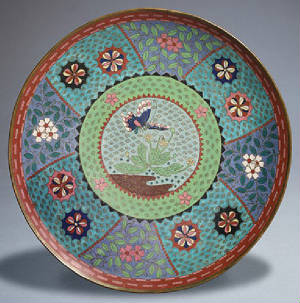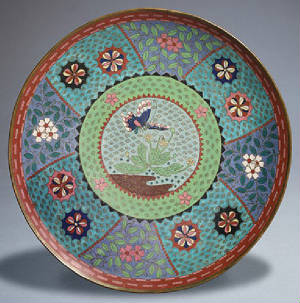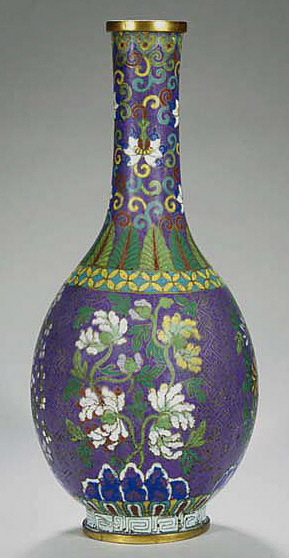
The Cloisonné Art
Introduction
Cloisonné art is native to the far eastern countries of Japan and China and is an ancient technique for embellishing metallic objects. This craft has been practiced and perfected for centuries by making use of a vitreous enamel as well as inlays of glass, cut gemstones and other materials. The craft in entirety is termed as ‘Cloisonné ’, which stands for ‘compartments’ in French. This is because the embellishment is done by creating compartments on the metal by using gold and silver wires to define the edges. The wires are invisible once the enamel or the inlays are completed, which also helps in separating the different colors and design of the product.
BACKGROUND
Origin and History
Centuries back, the cloisonné technique was primarily used for jewelry. The craft can be dated back to the Byzantine Empire through the various pictorial images that show the use of this particular enamel craft. This technique had spread to China in the 14th century, who already had a well-developed concept of metals. This is where it was used to adorn large vessels like vases and bowls made out of copper, bronze, silver and gold. This craft continues to remain a rich heritage of China till date. Cloisonné products, particularly vases were brought to India through the Chinese and Japanese traders and were often exchanged for Indian crafts or spices. The Nizam of Hyderabad was a great connoisseur of Japanese and Chinese cloisonné artefacts, and he used to assemble a wide collection of vases and other decoration pieces. These are up on display at the Salarjung Museum in Hyderabad.
Influences over the Years
Cloisonné is also historically said to have acquired a new form after being brought to India. Crafts such as Kundan, Meenakari and Pachchikar are said to be Indian derivatives of cloisonné. However, China and Japan adopted the art in its original form and have maintained it with great skill and perfection. There are seven main techniques of enamel adornment and the two main techniques are – ‘champleve enameling’ and ‘Cloisonné enameling’. The latter is what India has been using since the time of the Mughals. It is said that Akbar had an independent dedicated department to this craft in his court. This technique of enameling was introduced to Jaipur through Raja Mansingh. It is also said that it was under Maharaja Jaisingh’s patronage that this enameling technique acquired great perfection and is now known as Meenakari– a derivative of cloisonné.
However, when it comes to exclusive cloisonné enameling, no country can be compared to the likes of China and Japan, for it was they who perfected this art form. It was they who gave it great depth with remarkable pieces of craftsmanship. In fact a sizeable collection of cloisonné artefacts are stored in Salarjung Museum such as Jaipur enamels, enameled dagger from Persia, Japanese vases and kettles and Chinese cloisonné ware dating back to the Ming and Ching eras.
Cloisonné continues to be a popular art form that is distinctively seen in China and Japan. The blue background is typical of the craft as is seen in many vases and other cloisonné products from China. The market for cloisonné has expanded considerably and that has given way to reinvention and innovation. There are a variety of cloisonné products that can be bought ranging from small boxes to dishes and teacups- which has placed them in great demand by the West.
References


